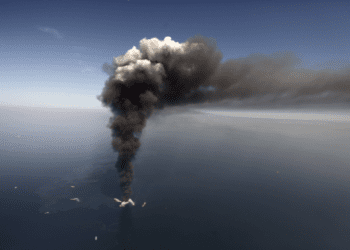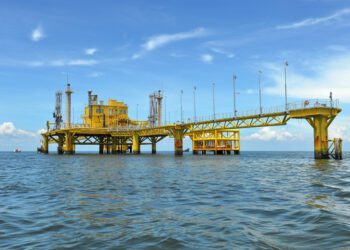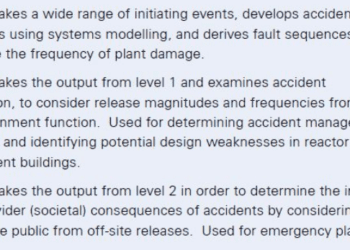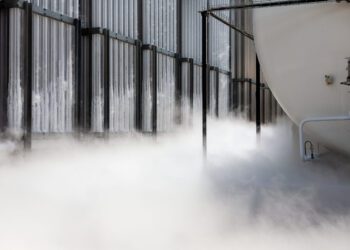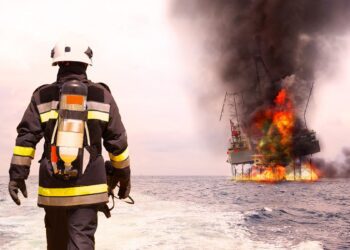What’s in a number? Myths and realities of PSA and QRA
In many major hazard industries there is a regulatory requirement that the risk posed to people by operation of a facility is shown to be tolerable and as low as reasonably practicable.
But, how do you measure risk? There are several techniques available to estimate risk, ranging from simple, qualitative frequency consequence matrices through to use of complex quantitative event tree, fault tree and consequence models. The precise technique used depends on the stage in the facility lifecycle, the complexity of its design and operation, and the potential consequences of any postulated accidents. In certain industries (such as nuclear, rail, oil & gas), acronyms like PSA (Probabilistic Safety Analysis) and QRA (Quantitative Risk Assessment) have become synonymous with the use of complex risk models and computer codes, accessible to a limited number of practitioners who often use mystifying language, but are able to generate seemingly authoritative risk numbers. As a consequence, a number of PSA/QRA myths have flourished.
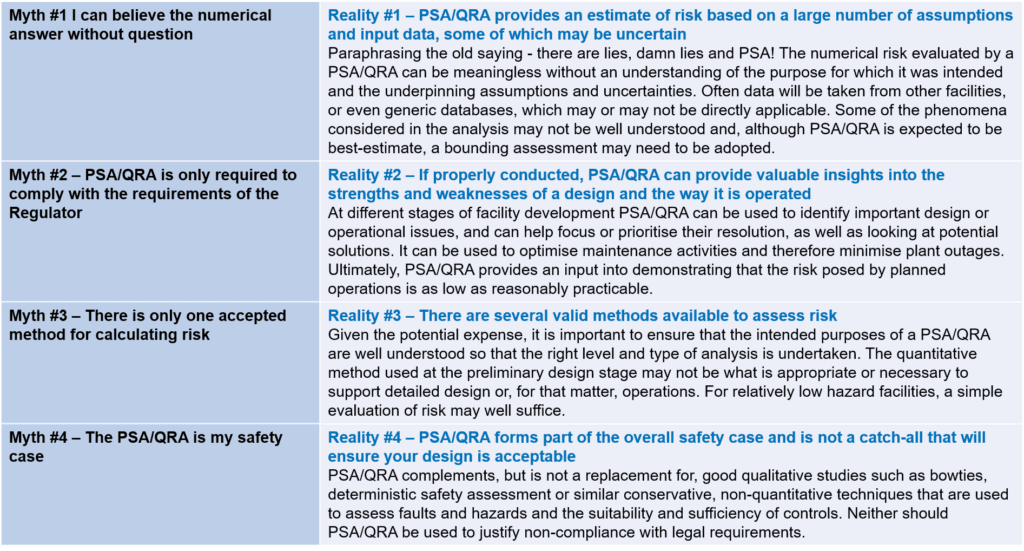
KEY TO SUCCESS
The key messages to take away are that PSA/QRA should:
- Be viewed as tools to aid in managing risk at all stages in a plant lifecycle.
- Be integrated with the design and operating processes.
- Be underpinned by an appropriate level of data.
- Not be considered an exact science.
Results should be used with a degree of caution and should be supported by qualitative understanding before informing decision-making, such as a design change.
The more complex the project, the more sophisticated the PSA/QRA is likely to be, involving a larger number of potentially affected stakeholders. Equally, the higher the associated risk, or sensitivity to an increase in risk, the more robust and comprehensive the supporting evidence should be.
CONCLUSION
To some, PSA/QRA may seem like another legislative or corporate hurdle. However, in the right hands, it provides a very powerful tool that can be used to aid understanding and support the decision-making process during the design and operation of a facility.
This article first appeared in RISKworld Issue 22.

